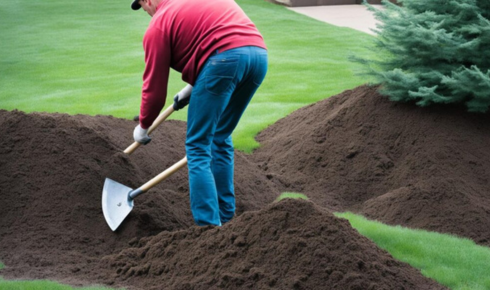How Huntsville Fence Company Tackles Difficult Soil Conditions

Building fences in North Alabama isn’t just about setting posts and nailing boards. It means working with a wide range of soils—some of them stubborn, others downright unpredictable. From red clay to sandy fill, a skilled fence company in Huntsville AL knows that adapting to the ground beneath is what makes a fence strong and long-lasting.
Use of Helical Screw Anchors for Unstable or Sandy Soil
Loose, sandy soil is tricky. It doesn’t hold well, and traditional post-setting methods can lead to leaning fences over time. That’s where helical screw anchors come into play. These corkscrew-style anchors twist deep into the ground, locking into firmer layers of earth far below the surface. Unlike regular posts, they don’t rely on the topsoil for support, making them ideal for areas with loose fill or unstable ground.
Fence builders near me often use these anchors when a property sits on backfilled land or has poor natural compaction. The anchors are machine-installed and designed to resist pull-out forces, so the fence stays upright during wind, storms, or shifting sands. They also save time—no concrete curing needed. The result is a secure post that can be built on the same day, even in soil that refuses to cooperate.
Installation of Grouted Auger Cast Piers in High-Clay Environments
High-clay soil brings its own brand of trouble. It expands with moisture and contracts when dry, putting constant pressure on fence posts. To beat this, fencing contractors near me turn to grouted auger cast piers—a method borrowed from commercial foundation work. The process involves drilling a hole, filling it with grout while inserting a rebar cage or steel rod, and letting it set to form a deep, stable footing.
This method reduces movement from seasonal clay shifts. Since the grout creates a solid column down to more stable soil layers, the fence won’t sink or tilt as the clay swells and shrinks. In regions around Huntsville, this is a must-have technique, especially for long fences or privacy panels that can’t afford any tilt. It’s a more advanced approach, but one that sets apart an experienced fence company in Huntsville AL from the rest.
Implementation of Pressure-Treated Timber Post Bases for Rot-Prone Ground
In areas where moisture hangs around—low spots, shaded yards, or spots with poor drainage—wood posts can rot fast. That’s why smart fencing contractors use pressure-treated timber post bases to keep decay at bay. These pre-treated bases are made to resist fungus, insects, and water damage, making them essential for long-term durability.
Instead of setting untreated wood directly into the ground, builders install these treated bases into concrete or gravel beds, lifting the structural post above the moisture zone. This small adjustment can add years to the life of a wooden fence. And for anyone searching “fence company near me” in the wetter parts of Madison or Huntsville, asking about this upgrade can mean the difference between replacing posts in five years or fifteen.
Adoption of Steel Post Sleeve Reinforcement in Rocky Substrates
Rocky ground might seem like a blessing at first—solid and unyielding. But for fencing, it’s a challenge. Posts can’t dig deep, and surface installations without reinforcement can wobble or snap under pressure. That’s why Huntsville fence company crews use steel post sleeves to anchor and support fencing in rocky conditions.
These sleeves act as armored jackets for wooden or metal posts, shielding them from torque or splitting while providing extra surface area for stabilization. The sleeve is often anchored into shallow rock-set concrete, forming a rigid connection that resists wind load and physical pressure. It’s a smart fix that combines brute strength with finesse, perfect for uneven yards filled with limestone or shale layers.
Pre-Drilling Footing Holes to Prevent Post Settling in Loamy Earth
Loamy soil sounds ideal—soft, fertile, and well-drained. But it also settles over time, which can make fences lean if the posts aren’t properly set. That’s why fence builders near me often pre-drill post holes rather than dig with augers alone. This step compresses and stabilizes the sides of the hole before setting the post, reducing the risk of post-movement.
Once the hole is drilled and tamped, it’s backfilled with either crushed gravel or fast-setting concrete. This secures the post while allowing natural drainage. Pre-drilling also helps ensure consistent hole depth and alignment, which is key for long runs of fencing. In loamy backyards, this attention to detail keeps fences straight long after the grass grows back over the soil line.
Incorporating Drainage Gravel Trenches Around Posts in Saturated Soil
Saturated soil is enemy number one for wood posts. It breeds rot, attracts pests, and weakens the entire structure. That’s why a well-trained crew from a fence company in Huntsville AL will dig drainage gravel trenches around posts in soggy ground. These gravel-filled barriers act like French drains, pulling water away from the base of the post and keeping it dry.
Beyond improving longevity, this technique also stops frost heave in colder months. Wet soil freezes and expands, pushing posts upward. But gravel trenches help regulate moisture and temperature around the footing. For areas of North Alabama that experience flash rains or lingering wet patches, this method is one of the smartest preventative steps you can take when building a fence that’s meant to last.
Application of Adjustable Post Brackets to Accommodate Seasonal Soil Shifts
Soil never really stays still. It shifts with seasons, temperature changes, and moisture levels. This can throw fence lines off over time—unless adjustable post brackets are used. These metal components allow the top structure of the fence to move slightly with the soil below, without affecting the integrity or appearance of the entire fence.
Fence builders install these brackets between the post base and the panel structure. As the ground moves, the bracket flexes just enough to absorb the change. It’s a smart way to protect both the fence and the surrounding landscape.



